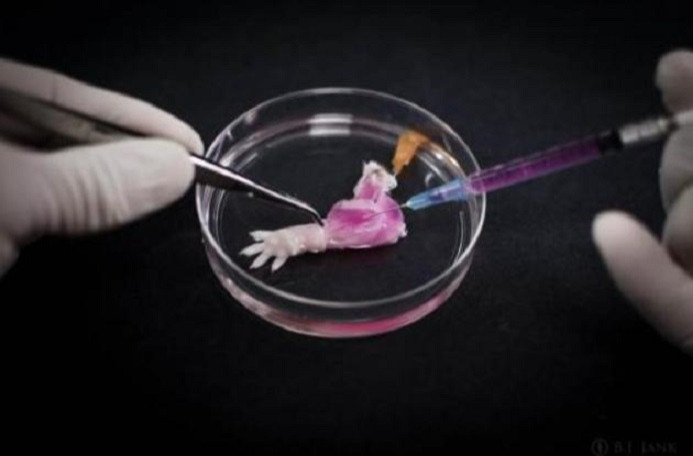First artificial biolimb grown under lab conditions is landmark in bio-artificial limb transplants

The first artificial 'biolimb' - complete with functioning veins and muscles - has been grown under laboratory conditions from living cells.
Scientists at the Massachusetts General Hospital (MGH) grew the forelimb of a rat using cells from a deceased rat to create a neutral matrix.
"The composite nature of our limbs makes building a functional biological replacement particularly challenging," said senior author Harald Ott from MGH's Center for Regenerative Medicine.
"Limbs contain muscles, bone, cartilage, blood vessels, tendons, ligaments and nerves - each of which has to be rebuilt and requires a specific supporting structure called the matrix."
The technique is already used for lab-grown organs, such as kidneys, lungs, hearts, and livers, however a limb had previously proved too complex for this method as they contain more than a single tissue type.
The biolimb was created by taking the forelimb of the dead rat and washing it in detergent for a week to strip it of everything except the primary vascular and nerve matrix, which was then used to form the structural basis for the new limb.
In less than three weeks a new limb was formed after the matrix was kept in a container known as a bioreactor. It was then possible to attach the limb to a living rat.
Ott is now hoping to use the same technique to grow a baboon arm and hopes that it can eventually be used to create biolimbs for humans.
Ott said: "We have shown that we can maintain the matrix of all of these tissues in their natural relationships to each other, that we can culture the entire construct over prolonged periods of time, and that we can repopulate the vascular system and musculature.
"We are focussing on the forearm and hand, but the technique can equally apply to arms, legs and other extremities."
Full details of the research were published in the journal Biomaterials this week.
© Copyright IBTimes 2025. All rights reserved.






















